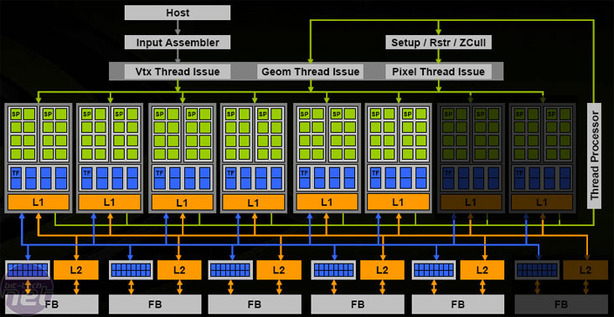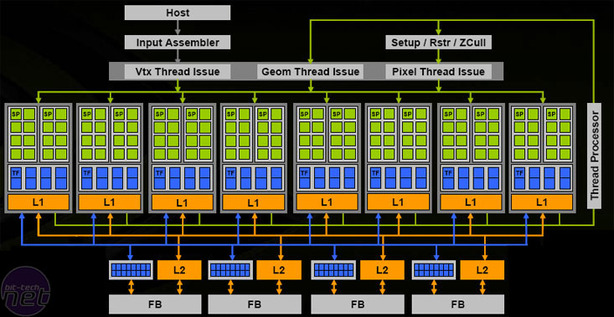Is it an 8800 GTS or not?
In November 2006 when Nvidia launched the G80-based GeForce 8800 GTS, it featured 640MB of on-board memory which was connected to the GPU via a 320-bit memory interface. In the card's reference form, the memory was clocked at 1600MHz (effective), which resulted in a healthy 64GB/sec of memory bandwidth.Because of the way Nvidia’s pixel output engines and memory partitions are configured, the number of ROPs scales with the amount of memory bandwidth available. In the case of the original GeForce 8800 GTS 640, there were five ROP partitions, which were each able to output four pixels per clock – resulting in a pixel fillrate of 10.26 Gpixels/sec.
In terms of shader horsepower, there were six shader clusters with each featuring 16 stream processors, 4 texture address units and 8 texture filtering units – this tots up to 96 stream processors, 24 texture units for addressing and 48 for filtering.

"This is a GeForce 8800 GTS" - Nvidia, November 2006
Nvidia’s new G92-based GeForce 8800 GTS 512 features a 256-bit memory interface which backs out onto 512MB of GDDR3 memory clocked at 1940MHz (effective), which results in a memory bandwidth of 62.08GB/sec – just three percent less than the original GeForce 8800 GTS. As a result of the reduced memory bus width, the number of ROP partitions is down to four; however, because Nvidia has increased the core clock quite significantly, the result is a net gain in pixel fillrate, as the GeForce 8800 GTS 512 can push 10.4 Gpixels/sec.
The shader portion of the GeForce 8800 GTS 512 is where the card has changed quite significantly. It now features eight shader clusters, which each have 16 stream processors, along with eight units for both texture addressing and texture filtering. When you combine this with the 1625MHz stream processor clock, the result is a GPU that has more shader and texturing horsepower than the company’s current flagship product: the GeForce 8800 Ultra.
That doesn’t immediately mean it’s a faster card than the GeForce 8800 Ultra though, because there are other factors that contribute to a card’s overall performance characteristic. For example, the GeForce 8800 Ultra has 66 percent more memory bandwidth and a 40 percent higher pixel fillrate than the GeForce 8800 GTS 512.

"This is a GeForce 8800 GTS" - Nvidia, December 2007
As I’m sure you can imagine these figures are going to mean that the majority of scenarios will show that the GeForce 8800 GTS 512 is not a competitor for the company’s flagship part, even though it’s got more shader and texture horsepower available. It’s a case of whether the GPU can actually harness the power that is on tap.
In one respect, the refined specifications on the GeForce 8800 GTS 512 breathe a new lease of life into a brand name that is surely coming close to the end of its lifetime, but in doing so it may also confuse consumers. Interestingly though, what could save the potential confusion is the fact that Nvidia has already started to phase out the GeForce 8800 GTS 640 and 320 models based on a straw poll across the UK’s top online retailers.
We assume that that's down to the fact that the GeForce 8800 GT kicks them both into touch for less money, but despite this, it’s not good news for those who have one of the original GeForce 8800 GTS cards and were thinking of an SLI upgrade to improve performance in some of this year’s top games – I would imagine it’s not going to be long before there are very few options left on the market.
The one final thing to consider with the new GeForce 8800 GTS 512 is that, because it’s based on the G92 graphics chip, it comes with Nvidia’s VP2 PureVideo HD decoding engine. This is something that wasn’t a feature on any of the G80-based products, including the 8800 GTS 640/320, 8800 GTX and 8800 Ultra. We’ve covered this video processor in a lot of detail before, so we’re not going to cover the same ground again.

MSI MPG Velox 100R Chassis Review
October 14 2021 | 15:04









Want to comment? Please log in.